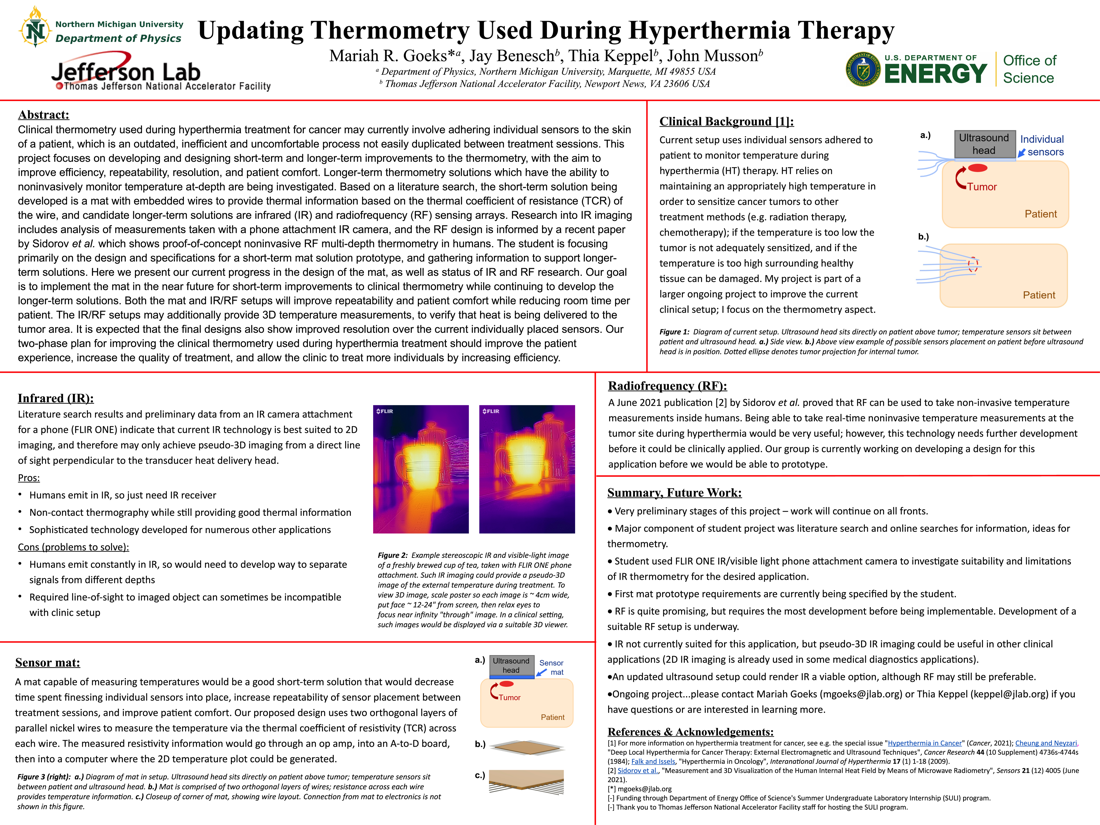Undergraduate Research at Jefferson Lab
Updating Thermometry Used During Hyperthermia Therapy
Student: Mariah Goeks
School: Northern Michigan University
Mentored By: Dr. Thia Keppel
Clinical thermometry used during hyperthermia treatment for cancer may currently involve adhering individual sensors to the skin of a patient, which is an outdated, inefficient and uncomfortable process not easily duplicated between treatment sessions. This project focuses on developing and designing short-term and longer-term improvements to the thermometry, with the aim to improve efficiency, repeatability, resolution, and patient comfort. Longer-term thermometry solutions which have the ability to noninvasively monitor temperature at-depth are being investigated. Based on a literature search, the short-term solution being developed is a mat with embedded wires to provide thermal information based on the thermal coefficient of resistance (TCR) of the wire, and candidate longer-term solutions are infrared (IR) and radiofrequency (RF) sensing arrays. Research into IR imaging includes analysis of measurements taken with a phone attachment IR camera, and the RF design is informed by a recent paper by Sidorov et al. which shows proof-of-concept noninvasive RF multi-depth thermometry in humans. The student is focusing primarily on the design and specifications for a short-term mat solution prototype, and gathering information to support longer-term solutions. Here we present our current progress in the design of the mat, as well as status of IR and RF research. Our goal is to implement the mat in the near future for short-term improvements to clinical thermometry while continuing to develop the longer-term solutions. Both the mat and IR/RF setups will improve repeatability and patient comfort while reducing room time per patient. The IR/RF setups may additionally provide 3D temperature measurements, to verify that heat is being delivered to the tumor area. It is expected that the final designs also show improved resolution over the current individually placed sensors. Our two-phase plan for improving the clinical thermometry used during hyperthermia treatment should improve the patient experience, increase the quality of treatment, and allow the clinic to treat more individuals by increasing efficiency.
[Watch the presentation on YouTube]

Citation and linking information
For questions about this page, please contact Education Web Administrator.
